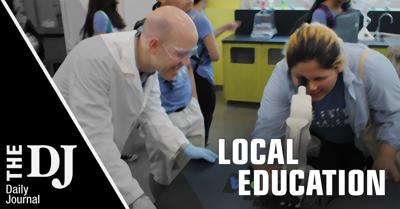While preparing for a full return to the classroom in the fall, the Belmont-Redwood Shores Elementary School District is anticipating a dip in enrollment paired with steady staffing levels, putting the district into deficit spending over the next two years.
“Budgets live and die by our assumptions,” Rui Bao, chief business official, said during a school board meeting Thursday, June 17.
While district revenue is anticipated to take a hit due to a drop in enrollment, expenditures are also predicted to dip as COVID-19 related costs decline through the recovery. But other budget lines including staff salaries and benefits are slated to increase along with supply costs to replace Chromebooks and other items.
Because of the additional costs, Bao said the district will likely operate at a deficit over the next two fiscal years. The district’s $53.4 million in expenditures is matched with $51.9 million in revenue followed by staff anticipating a steady gap of about $2 million.
“Starting pretty early next year when we see where enrollment shakes out we’ll want to start having those conversations about what that looks like for future years,” Bao said.
To potentially achieve some savings, the board unanimously supported refinancing portions of two bonds, approved by voters in 2010 and the other in 2014. The bonds are collectively valued at $73 million but no more than $45 million of the bonds would be refinanced.
About $49 million of the more than $98.5 million of district debt eligible for refinancing would produce positive results for the district, resulting in about $3.78 million in anticipated savings over the bonds’ lifetime.
When considering refinancing a bond, agencies typically look for a savings of at least 6% of the bond amount, Steven Gald, vice president of public finance with California Financial Services, said. While anticipating savings on one bond of up to 10%, he noted the district would be vulnerable to the behavior of the market on the day the bonds go out for sale, calling refinancing a “gamble.”
“We believe with our crystal ball that interest rates will be going up and that we’ll look back in two years and be glad that we didn’t wait,” Bao assured the board.
The district’s focus on finances comes as the staff prepares to fully reopen to students in August. During an update of the district’s plans for the upcoming school year, Superintendent Daniel Deguara said plans were moving as anticipated as local, state and federal safety recommendations come into alignment.
Some changes could still be presented, he said, including masking requirements. Because children below the age of 12 are not currently eligible for vaccines, all students and staff are required to wear masks but it’s unclear whether students will be allowed to go maskless when outdoors. Vaccine eligibility may also open up to some of those students in the fall.
Masking will not be required for student athletes who cannot wear face coverings safely or come into little contact with others. Masks will be required for choir groups, students in theater productions and students who play wind instruments.
Deguara said the “big variables” currently are whether indoor masking and social distancing rules will change before the start of school. He suggested some changes being discussed would also allow for social distancing rules in classrooms to be reduced from the 3-feet requirement currently in place.
Questions also lingered around whether staff and students would be required to wear masks if vaccinated. Despite the state’s reopening and loosening recommendations around mask wearing for vaccinated people, the Centers for Disease Control and Prevention has not yet changed masking recommendations for K-12 schools.
If an outbreak were to occur at one of the district’s seven schools, Deguara said students could be transitioned to remote learning but doing so would look “radically different” than it has the past year.
“I want our students to be healthy and safe and I also recognize that families depend on schools to be open,” Deguara said. “We got to take care of the people and we’re going to do that just like we did this year, together because we’re better together.”
Transportation to school was also a concern of commissioners who questioned whether SamTrans buses would have a capacity cap in the fall on top of mask requirements.
Deguara said student-facing bus routes should run as normal but admitted the routes are dependent on the agency’s ability to hire drivers, a current issue in the county.
Still, Deguara took a positive stance, suggesting the new technical skill developed during the pandemic could help reshape how the district connects with families and teachers interact with students. Moving into the new school year, he said he wants to see teachers prioritize building strong relationships with their students.
“I like that we’re returning to normal but I’d also like a better than normal,” Trustee Sam Leinbach said. “Maybe a silver lining of the pandemic is opportunities to change some things we’ve been doing for decades that’s been so ingrained in the system.”
























(0) comments
Welcome to the discussion.
Log In
Keep the discussion civilized. Absolutely NO personal attacks or insults directed toward writers, nor others who make comments.
Keep it clean. Please avoid obscene, vulgar, lewd, racist or sexually-oriented language.
Don't threaten. Threats of harming another person will not be tolerated.
Be truthful. Don't knowingly lie about anyone or anything.
Be proactive. Use the 'Report' link on each comment to let us know of abusive posts.
PLEASE TURN OFF YOUR CAPS LOCK.
Anyone violating these rules will be issued a warning. After the warning, comment privileges can be revoked.